Scientific Information/Data
Himalayan Shilajit Extract (Asphaltum punjabinum) is a purified form of shilajit also known as salajit, shilajatu, mimie, or mummiyo. This naturally occurring phytocomplex is found in high mountain rocks, especially those of the Himalayas and Hindu Kush ranges of the Indian subcontinent. It is formed from decomposed plant material that has been preserved in the dark pressure of rocky crevasses. As the sun warms the rocks and the snow melts, the shilajit seeps out and is scraped from the stone by hand. XYMOGEN’s shilajit is meticulously harvested at high altitudes to ensure the purest product possible. It is then low-temperature dried and tested to be free of pollutants. Shilajit is composed mainly of humic substances, including fulvic acid, plus some oligoelements (minute amounts of trace elements). It has a rich history of use in the Indian Ayurvedic and Siddha systems of medicine, and it is known as a rasayana because of its rejuvenating qualities.*[1] Modern research suggests that shilajit has powerful antioxidant activity.[1-3] As an example, in an animal model, processed shilajit increased superoxide dismutase (SOD), catalase (CAT), and glutathione peroxidase (GPx) activities in a dose-dependent manner.[3] Furthermore, humic substances, as found in shilajit, have been shown to affect the distribution, metabolism, and absorption of heavy metals, such as cadmium and lead.[4-7] One human study showed that the daily consumption of humic acid with bound complex micro-elements for six weeks decreased uptake and increased urinary excretion of cadmium in alkaline battery production workers.*[8]
EDTA (ethylenediaminetetraacetic acid) is a synthetic amino acid compound and perhaps the most well-known and oftenused intravenous chelating agent. Oral EDTA is poorly absorbed, but it is thought to support detoxification of metals largely in the gastrointestinal tract.[9,10] More studies are needed to validate oral administration. It is believed that there is a benefit in combining EDTA with other chelators because EDTA acts slowly and could potentially lead to redeposition of metals.[11] Due to EDTA’s metal-binding ability, it is important to replace beneficial minerals, such as zinc, copper, iron, cobalt, and manganese
Cilantro (Coriandrum sativum), also known as Chinese parsley or coriander, suppresses the deposition of lead by chelating the metal.[12] Furthermore, in an experimental animal study, lead induced histological changes in the testis of albino mice were prevented to some extent by concomitant daily administration of C sativum extracts, perhaps due to a reduction in associated oxidative stress.*[13]
Allicin is the main biologically active component of garlic clove extracts and has promising effects on toxic metal accumulation in experimental research.[14] In animal and in vitro models, garlic was able to reduce cellular exposure to, or accumulation of, lead, cadmium, and mercury.[15-20] Furthermore, various extracts and forms of garlic have demonstrated garlic’s ability to positively affect detoxification pathways.*[2]
Chlorella is a naturally occurring micro-algae and an excellent source of chlorophyll—a detoxifying substance that is also thought to bind toxic metals. The positive effect of chlorella supplementation on toxic metals, including methylmercury, cadmium, and lead, is supported by animal research.[21,22] For example, testing its metal chelating ability, researchers observed a dramatic 66.03% reduction in blood lead levels in mice receiving chlorella extract (50 mg/kg/day) concurrent with lead exposure compared to lead-exposed, non-treated mice.*[21]
N-Acetyl-L-Cysteine (NAC) and Alpha-Lipoic Acid (ALA) are well-known for their antioxidant activity. Exposure to heavy metals increases free radical production and oxidative stress.[23] Research suggests that there is a beneficial role for free radical scavengers in reducing the oxidative stress that is common with toxic metal exposure.[24] NAC has the ability to interact with reactive oxygen species (ROS) and stimulate the body to produce glutathione. This can enhance cell survival after exposure to heavy metals or toxins.[25] In addition, ALA may directly chelate or reduce the oxidative capacity of metals, such as copper, arsenic, cadmium, and mercury.*[26-29]
*These statements have not been evaluated by the Food and Drug Administration. This product is not intended to diagnose, treat, cure, or prevent any disease
References
1. Carrasco-Gallardo C, Guzmán L, Maccioni RB. Shilajit: a natural phytocomplex with potential procognitive activity. Int J Alzheimers Dis. 2012;2012:674142. [PMID: 22482077]
2. Mittal P, Kaushik D, Gupta V. Therapeutic potentials of “shilajit rasayana”: a review. Int J Pharm Clin Res. 2009;1(2):47-49. http://www.rudramani.com/research/shilajit-as-amedicine-for-general-physical-strengthening-anti-aging-and-much-more.pdf.
Accessed August 1, 2014.
3. Bhattacharya SK, Sen AP, Ghosal S. Effects of shilajit on biogenic free radicals. Phyto Res. 1995 Feb;9(1):56-59. doi:10.1002/ptr.2650090113.
4. Glynn AW. Fulvic and humic acids decrease the absorption of cadmium in the rat intestine. Arch Toxicol. 1995;70(1):28-33. [PMID: 8750902]
5. Lind Y, Glynn AW. The influence of humic substances on the absorption and distribution of cadmium in mice. Pharmacol Toxicol. 1999 Jun;84(6):267-73. [PMID: 10401728]
6. Gondar D, Lopez R, Fiol S, et al. Cadmium, lead, and copper binding to humic acid and fulvic acid extracted from an ombrotrophic peat bog. Geoderma. 2006 Nov;135:196-203. doi:10.1016/j.geoderma.2005.12.003.
7. Sharma P, Jha J, Shrinivas V, et al. Shilajit: evaluation of its effects on blood chemistry of normal human subjects. Anc Sci Life. 2003 Oct;23(2):114-9. [PMID: 22557121]
8. Hudák A, Náray M, Nagy I, et al. Effect of the consumption of humic acid with bound complex micro elements in cases of occupational cadmium exposure. National Institute of Occupational Health, Budapest, Hungary. http://www.omfi.hu/cejoem/Volume3/Vol3No3/ ce973-2.HTM. Accessed July 31, 2014.
9. Foreman H, Trujillo TT. The metabolism of C14 labeled ethylenediaminetetraacetic acid in human beings. J Lab Clin Med. 1954 Apr;43(4):566-71. [PMID: 13163555]
10. Shiels DO, Thomas DL, Kearley E. Treatment of lead poisoning by edathamil calciumdisodium. AMA Arch Ind Health. 1956 May;13(5):489-98. [PMID: 13312679]
11. Besunder JB, Super DM, Anderson RL. Comparison of dimercaptosuccinic acid and calcium disodium ethylenediaminetetraacetic acid versus dimercaptopropanol and ethylenediaminetetraacetic acid in children with lead poisoning. J Pediatr. 1997 Jun;130(6):966-71. [PMID: 9202621]
12. Aga M, Iwaki K, Ueda Y, et al. Preventive effect of Coriandrum sativum (Chinese parsley) on localized lead deposition in ICR mice. J Ethnopharmacol. 2001 Oct;77(2-3):203-08. [PMID: 11535365]
13. Sharma V, Kansal L, Sharma A. Prophylactic efficacy of Coriandrum sativum (Coriander) on testis of lead-exposed mice. Biol Trace Elem Res. 2010 Sep;136(3):337-54. [PMID: 19902160]
14. Aslani MR, Najarnezhad V, Mohri M. Individual and combined effect of meso-2,3- dimercaptosuccinic acid and allicin on blood and tissue lead content in mice. Planta Med. 2010 Feb;76(3):241-44. [PMID: 19764011]
15. Senapati SK, Dey S, Dwivedi SK, et al. Effect of garlic (Allium sativum L.) extract on tissue lead level in rats. J Ethnopharmacol. 2001 Aug;76(3):229-32. [PMID: 11448543]
16. Shahsavani D, Baghshani H, Alishahi E. Efficacy of allicin in decreasing lead (Pb) accumulation in selected tissues of lead-exposed common carp (Cyprinus carpio). Biol Trace Elem Res. 2011 Sep;142(3):572-80. [PMID: 20711682]
17. Najar-Nezhad V, Aslani MR, Balali-Mood M. Evaluation of allicin for the treatment of experimentally induced subacute lead poisoning in sheep. Biol Trace Elem Res. 2008 Winter;126(1-3):141-7. [PMID: 18719860]
18. Jiang W, Liu D, Hou W. Hyperaccumulation of cadmium by roots, bulbs and shoots of garlic (Allium sativum L.). Bioresour Technol. 2001 Jan;76(1):9-13. [PMID: 11315815]
19. Lee JH, Kang HS, Roh J. Protective effects of garlic juice against embryotoxicity of methylmercuric chloride administered to pregnant Fischer 344 rats. Yonsei Med J. 1999 Oct;40(5):483-9. [PMID: 10565261]
20. Melino S, Sabelli R, Paci M. Allyl sulfur compounds and cellular detoxification system: effects and perspectives in cancer therapy. Amino Acids. 2011 Jun;41(1):103-12. [PMID: 20213447]
21. Queiroz ML, Rodrigues AP, Bincoletto C, et al. Protective effects of Chlorella vulgaris in lead-exposed mice infected with Listeria monocytogenes. Int Immunopharmacol. 2003 Jun;3(6):889-900. [PMID: 12781705]
22. Uchikawa T, Maruyama I, Kumamoto S, et al. Chlorella suppresses methylmercury transfer to the fetus in pregnant mice. J Toxicol Sci. 2011 Oct;36(5):675-80. [PMID: 22008543]
23. Vassallo DV, Simões MR, Furieri LB, et al. Toxic effects of mercury, lead and gadolinium on vascular reactivity. Braz J Med Biol Res. 2011 Sep;44(9):939-46. [PMID: 21845340]
24. Flora SJ, Pande M, Mehta A. Beneficial effect of combined administration of some naturally occurring antioxidants (vitamins) and thiol chelators in the treatment of chronic lead intoxication. Chem Biol Interact. 2003 Jun 15;145(3):267-80. [PMID: 12732454]
25. James SJ, Slikker W 3rd, Melnyk S, et al. Thimerosalneurotoxicity is associated with glutathione depletion: protection with glutathione precursors. Neurotoxicology. 2005 Jan;26(1):1-8. [PMID: 15527868]
26. Gaetke LM, Chow CK. Copper toxicity, oxidative stress, and antioxidant nutrients. Toxicology. 2003 Jul 15;189(1-2):147-63. [PMID: 12821289]
27. das Neves RN, Carvalho F, Carvalho M, et al. Protective activity of hesperidin and lipoic acid against sodium arsenite acute toxicity in mice. Toxicol Pathol. 2004 Sep-Oct;32(5): 527-35. [PMID: 15603538]
28. Bludovska M, Kotyzova D, Koutensky J, et al. The influence of alpha-lipoic acid on the toxicity of cadmium. Gen Physiol Biophys. 1999 Oct;18 Spec No:28-32. [PMID: 10703716]
29. Keith RL, Setiarahardjo I, Fernando Q, et al. Utilization of renal slices to evaluate the efficacy of chelating agents for removing mercury from the kidney. Toxicology. 1997 Jan 15;116(1-3):67-75. [PMID: 9020508]


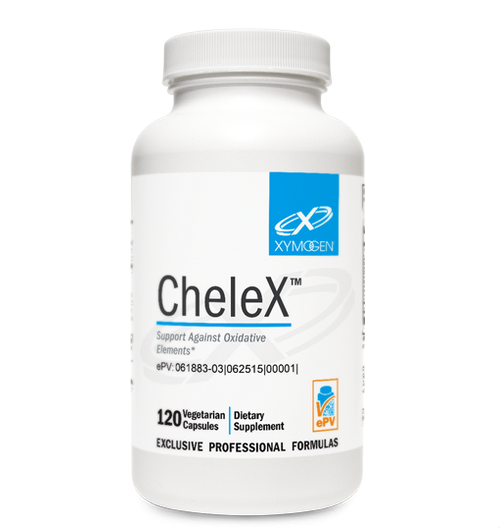
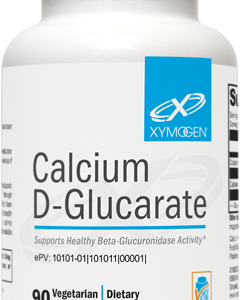
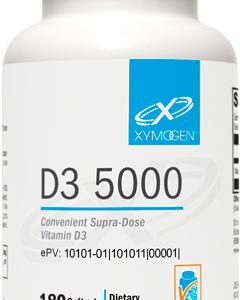
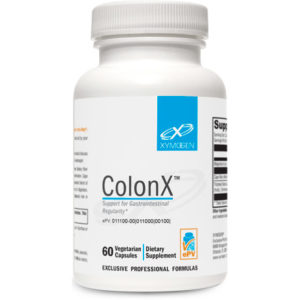
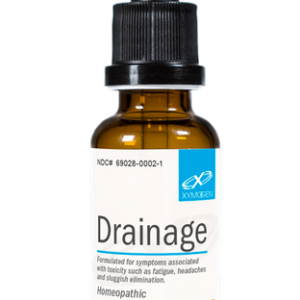
Reviews
There are no reviews yet.